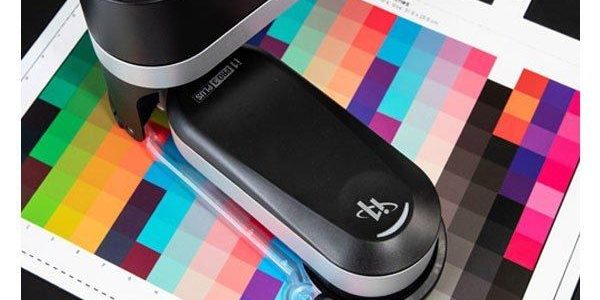StudioRIP 4.1 had a fairly accurate proofing module which generally passed the Fogra certification. It wasn’t uncommon though that in certain black generation or ink limit conditions the Fogra certification failed.
A major rewrite of the proofing module in StudioRIP 4.2 brings a significant improvement in proofing accuracy: typical profiling results in a maximum ΔE < 2 and an average ΔE < 0.8 on the Fogra media wedge and patches of ΔE > 4 are extremely rare.
Passing the Fogra certification isn’t uncertain anymore – if the printer and the paper are of adequate quality, you can rely on StudioRIP passing the certification. The results are also consistent in halftone proofing mode, and the use of the orange, green and violet colors does not have a negative effect on the result.
The key of StudioRIP’s accuracy is that it only samples the 3-dimensional CMY space, while conventional profilers sample the 4-dimensional CMYK color space. As a comparison, sampling with 10 patches per axis results in 10,000 patches for CMYK but only 1,000 patches for CMY.
The 3-dimensional sampling is based on a formula which converts CMY colors into CMYK using the black generation parameter selected by the operator. Also, in case of printers with gamut extending inks there is another formula that replaces the orange, green or violet components of the color with these inks, so the profiler module will see the CMYKOGV printer as a CMY printer with a wider gamut.
But if this method is so advantageous, why don’t other profilers use it?
Generic profilers cannot do this because it doesn’t create an accurate CMYK → Lab conversion (if we sample high black generation colors only, we simply won’t have information about low black generation colors). So this method is especially suitable for proofing where we are interested in accurate Lab → CMYK conversions only.
But why don’t other proofers use this method?
Because it’s much more complicated than it sounds. Which CMY combination should produce the C = 0, M = 100, Y = 100, K = 50 color? And which one should produce full tint of green ink (that is rather turquoise)? How should we do the black generation if highlights need low black generation, saturated or dark colors need high black generation, the user preferences should be respected, and sudden changes should be avoided? If the subtractive color model tells us that adding any ink makes the colors darker, why does adding yellow over black makes it lighter? Trying to answer these questions you may realize the difficulties of creating the CMY → CMYKOGV formula.
But once we have the formula, it allows a brute-force approach of sampling the CMY color space so densely that big interpolation errors simply become impossible. Combined with the iterative technique of adding further samples in areas with poor density (where we have a big ΔE value between the neighboring samples), with only 2000 patches the samples are so dense that any color in the CMY space will have in its proximity at least one printed sample at ΔE < 7. Interpolating between such close neighbors produces an average accuracy of ΔE < 0.8.
With the ability to produce proofs with a typical maximum ΔE < 2 and average ΔE < 0.8, StudioRIP becomes an important player in the proofing market.
At such a competitive price (typically around the price of the printer itself) StudioRIP will be the perfect choice for the vast majority of customers who need reliable and accurate contone and halftone proofs.
The proofing capabilities of StudioRIP will be completed in the following weeks with features such as adding the 3.0 Media wedge, a printed/PDF report of proof verification, the implementation of the M-factor measuring conditions (currently available only for EPSON SpectroProofer), and support of further spectrophotometers (such as the i1 Pro 3 and the Techkon SpectroDens).

